Thermal Imaging/Infrared Technology
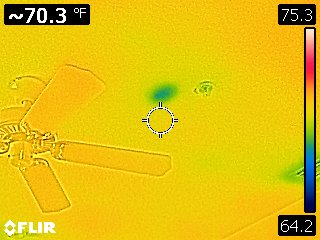

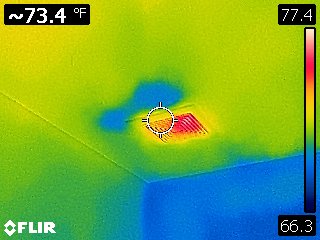
How can thermal imaging protect your investment? Can inspectors see through walls? Not exactly but almost. Infrared (IR) cameras are a very versatile and cutting-edge technology that can help to enhance the understanding of residential or commercial buildings systems and components. Infrared or thermal cameras create an image by detecting differences in surface temperatures and converting those temperatures into colors on a gradient scale, with higher temperatures being lighter and lower temperatures appearing as darker colors. Thermal imaging can be used to help identify several conditions including; air conditioning leaks, missing insulation, over heating electrical components and roof or plumbing leaks. When there is a problem such as a roof or plumbing leak, the moisture will evaporate causing the wet area to be cooler than the surrounding area, and the camera will translate those differences in temperature into a visual image that shows where those differences in temperature are. Some cameras will also overlay the thermal image with a digital image to aid in differentiating where items or surface changes are. With suspected moisture problems, it is always important to confirm or backup thermal imaging findings with a quality moisture meter as there are other factors that must also be considered when performing an infrared inspection. It is a misconception that thermal imaging cameras have x-ray vison and can see through walls, this is only partially true. A thermal camera is limited to surface temperatures, however, things within walls such as hot water pipes can change the surface temperature of a wall enough to be able to “see” the pipe in the wall. Thermal imaging has become a very important part of the inspection process but requires extensive training to understand and use the technology properly. We are trained, Infrared Certified and experienced with using thermal imaging cameras. Contact us today for more information.
FAA Licensed Commercial Drone Operator

Did you know that we are licensed by the FAA as a commercial drone operator? We utilize the latest in drone technology to access roofs and other exterior components of residential and commercial buildings that may be inaccessible to other inspection companies. If the property you are considering for purchase has two or more stories that are inaccessible in a safe manner or too steep to walk safely we can inspect it by drone. We are here to protect your investment by providing the best inspections and information possible. Quality Inspections, Quality Reports and Quality Customer Service so you have a solid foundation for making a solid decision. Contact us Today!
Galvanic Corrosion
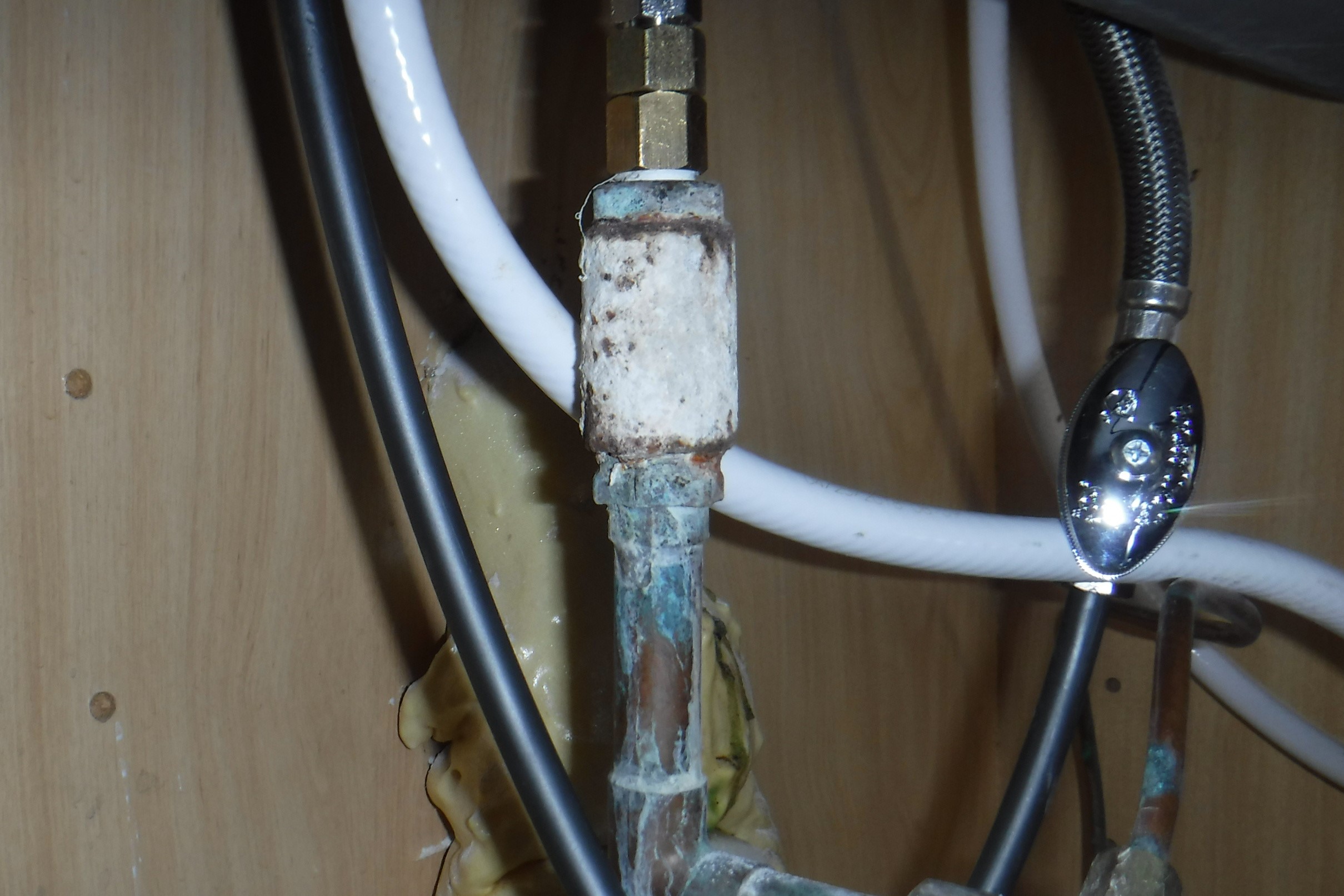
What is galvanic corrosion and why does it matter to a home owner? Let’s start with what corrosion is. Corrosion is the gradual destruction of metals through a natural process which converts refined metals into more stable forms including oxides, hydroxides and sulfides. For example, when a piece of iron rusts, it is the transformation of iron into iron oxide. Galvanic corrosion is an electrochemical reaction that occurs when dissimilar metals are in contact with each other and immersed in a common electrolyte solution capable of carrying an electric current such as salt water, rain water and even city water that has additives added. A great example of this is in steel boats and sea water. Steel boats will rust in the presence of sea water and so it was discovered that by adding a sacrificial anode such as zinc metal to the hull of a vessel, the corrosion could be directed towards that material instead of the hull of the boat and the sacrificial anode can be easily replaced as necessary. How does this relate to my home? Your water heater, for example, has a sacrificial anode rod typically made of aluminum, magnesium and/or zinc to protect the inner steel water heater tank. Periodically, these anodes need to be replaced as they are consumed, and sometimes there may be a small amount of debris in your hot water supply from a deteriorating anode. Galvanic corrosion can occur at the water heater’s cold and hot water supply connections if dielectric unions are not used. Dielectric unions prevent the contact of dissimilar metals at plumbing connections. In the sample image, a galvanized steel fitting is installed between two copper pipe fittings, and you can see that the galvanized pipe fitting is significantly corroded and may leak or fail in the future. Galvanic corrosion is not just limited to plumbing connections but can occur anywhere that dissimilar metals are in contact with each other and in the presence of moisture such as, metal roofing and its fasteners and at electrical connections. Contact us today to schedule your home inspection.
Single Strand Aluminum Wiring

In residential electrical systems, single strand aluminum wiring was often substituted for copper wiring between approximately 1965 and 1973, due to the rising costs of copper as supplies were directed towards the Vietnam war effort and production of munitions. After approximately a decade of use it was discovered that there were several weaknesses in this material and application resulting in poor connections, which leads to overheating and the risk of fire. Aluminum has a higher electrical resistance than copper which means to provide the same “flow” at a given amperage, aluminum conductors must be larger in diameter. It is less ductile than copper and more prone to fatigue failures from repeated bending which can cause damage to the conductor internally, resulting in increased resistance and overheating. Aluminum is susceptible to galvanic corrosion when in contact with dissimilar metals and it produces an oxide coating on the surface which can deteriorate connection and present a fire hazard. Aluminum also expands and contracts significantly due to thermal variations which can cause connections to loosen over time. New aluminum wiring types have since been introduced that are not subject to the same disadvantages. However, if your home does have older single strand aluminum wiring, several options exist for correction, including rewiring the home with copper wiring, or by using copalum crimp connectors to pigtail copper wires at all wiring terminations. While very effective, they can be costly (roughly $50 per switch, light fixture, outlet and every connection in the service panel). Several other methods exist but are not recommended as permanent repairs by the Consumer Product Safety Commission. In Florida, the presence of single strand aluminum wiring may limit the available options for homeowner’s insurance until it has been replaced or repaired by a licensed electrical contractor. If you are uncertain or concerned about the condition of your home’s electrical system, contact us today to schedule your home inspection.
Backflow Preventers
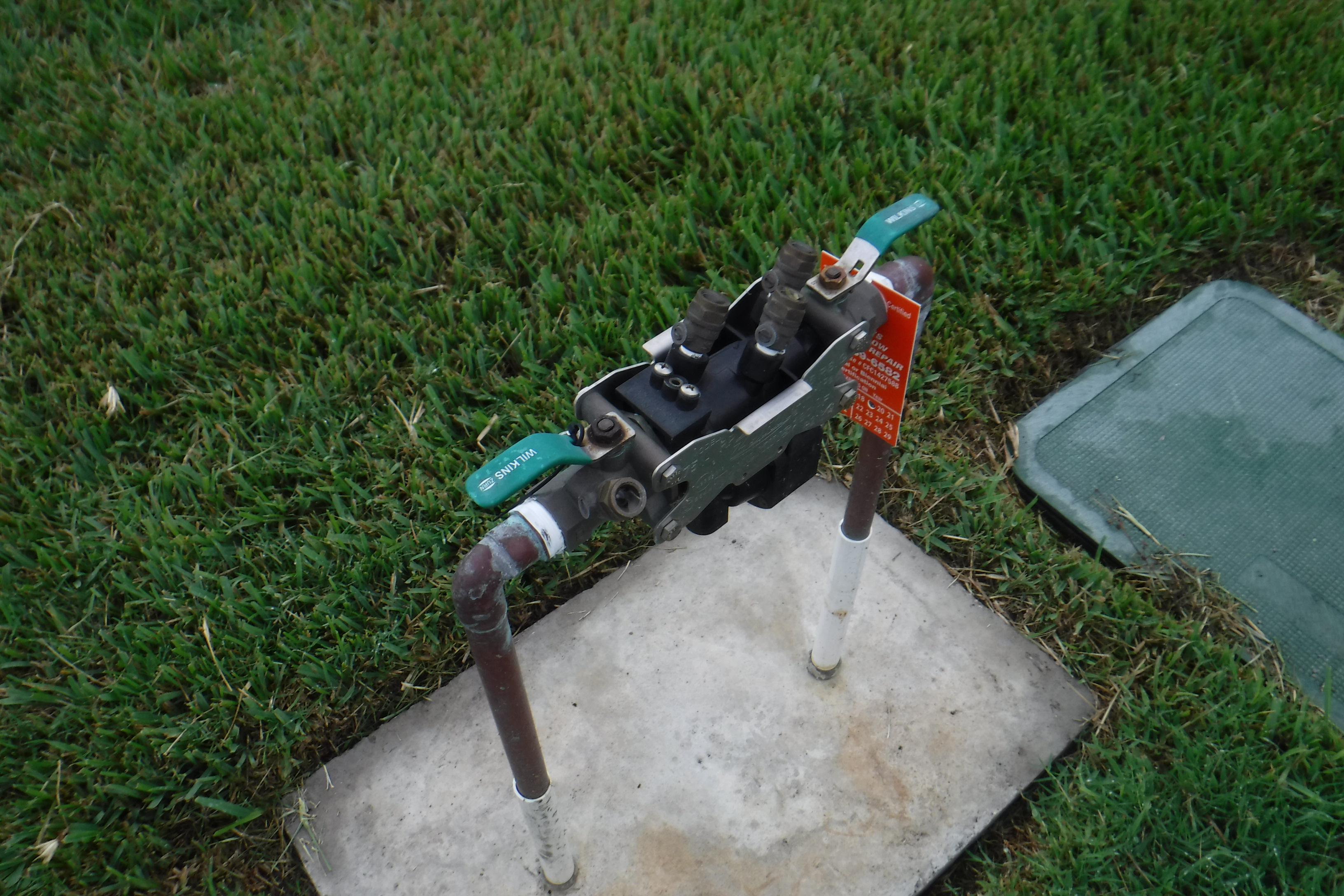
Buying or own a home on city water in Manatee County? Annual backflow prevention testing is required to avoid extra fees and penalties. Here is what you need to know about backflow preventers: A backflow preventer is a device that keeps water from flowing from your home back into the main water supply and introducing contaminates, especially when cross connections exist. A cross connection occurs when there is a link between potable and non-potable water (e.g. garden hose submerged in a pool). Water flows from high pressure to low pressure and when a water line breaks or there is a large demand on the water supply the pressure is reduced which can allow backflow to occur resulting contamination of the water supply that could cause illness or death. Backflow preventers are U shaped copper pipes located close to the water meter and have check valves with seals and springs that are subject to wear, fatigue and fouling and must be tested to ensure proper function. As a home owner, you are responsible for having annual testing performed by a registered service provider available at www.mymanatee.org/water. Fees vary between providers and you do not have to be present as testing typically only takes 5-10 minutes and occurs at the backflow preventer. Manatee County requires that you maintain a three-foot clearance from vegetation around the backflow preventer. Service providers will submit results to the counties reporting site. If you receive an annual notice, you have 30 days to have testing completed and submitted. If you receive a final notice, there are two options: either allow Manatee County to send their service provider at an increased cost, or hire your own service provider at the risk of still being charged by the county and results are required to be submitted within 7 days. If your backflow preventer fails, you will be given a water shut-off date which will be enforced until you have the unit brought into compliance and certified. This information is to help you understand a little known responsibility of home ownership that often presents itself as a notice from the county.
Anti-Scald Valves

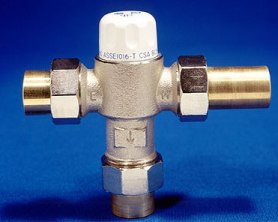
What’s that thing under my sink? You may have noticed a little extra plumbing under your bathroom sink and wondered what its purpose was. Anti-scald valves, which are also known as tempering or mixing valves, mix cold water into the outgoing hot water supply to reduce the water temperature and prevent scalds or burns. Most people have probably experienced the sudden temperature fluctuations when showering and someone flushes a toilet. This is caused by the filling of the toilet tank reducing the available cold-water supply pressure to your shower. A sudden burst of 160-degree hot water can cause severe burns and scalding, especially in young children within 0.5 second and hot or cold bursts may cause falls or even heart attacks in the elderly. Anti-scald valves help mitigate this danger by balancing the incoming hot and cold-water pressures to maintain a set temperature within a few degrees and temperature output can be fine-tuned with an adjustment knob. Installation of ant-scald valves is typically simple and inexpensive and can be installed at the water heater to protect all plumbing fixtures or they can be installed to protect a specific fixture. If you have an active home with young children or elderly persons, consider having an anti-scald valve installed by a qualified plumbing contractor to protect yourself and your loved ones.
Acoustic or Popcorn Ceilings
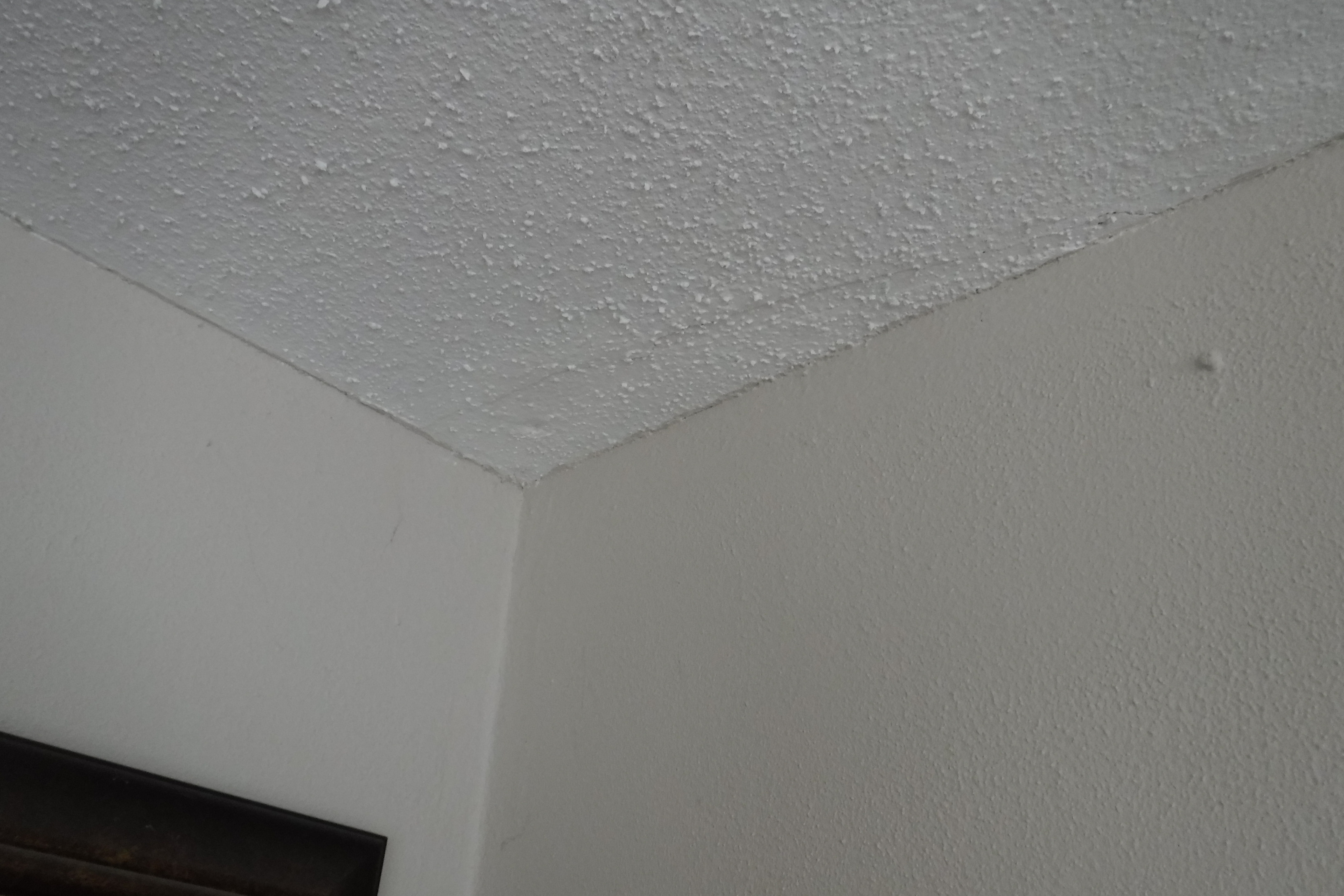
Acoustic ceilings or popcorn ceilings, as they are commonly known, were very popular in homes from the 1950’s to the 1980’s primarily for the ability to quickly and easily cover minor imperfections in ceilings compared to other surface finishes. The “acoustic” name refers to the ability to reduce noise levels because of the increased surface area and irregular shapes that redirect sound. Acoustic ceilings also have some downsides as well, such as being difficult to clean and difficult to match the same size, pattern and texture of the original application when a repair is required and most notably that it can contain asbestos. The Clean air Act of 1978 banned spray-on asbestos products, but it continued to be installed into the 1980’s to allow distributors to use existing supplies. The amount of asbestos contained in a product or application can vary however, the most important aspect is how friable it is. Friability refers to how crumbly it is and how easily the asbestos fibers can become airborne. Asbestos causes damage when inhaled into the lungs so care must be taken during repairs or removal. These ceilings are best left well encapsulated in paint or if they are removed they should be done by a professional that is trained and experienced in this type of work to minimize contamination and health concerns. Many home products can be health hazards and we work hard to inform you of any potential concerns.
Zinsco Electric Panels


Zinsco and/or Zinsco-Sylvania is a brand of electrical panel that was commonly installed in the United States until the mid-1970’s. Production was halted when it was discovered that design flaws caused failures and an increased risk in fires and electrocution. As is typical, stocks of panels already in distributors warehouse continued to be installed until supplies were depleted. Zinsco panels can be identified by their name and diamond shaped logo as well as the color-coded breaker toggle levers. These panels utilize aluminum bus bars, to distribute power to the breakers, which forms an oxide layer due to contact with the atmosphere which acts as an insulator rather than a conductor. This oxide layer can create poor connections between the bus bar and breakers which can cause arcing between the two and ultimately lead to the breaker melting to the buss bar. A similar scenario has also been observed to occur within the breakers causing the contacts to fuse together resulting in overheating and melting of the breakers. These breakers have been found to not trip properly and continue to supply power to downstream circuits even when they appear to be off. The best course of action if your home has this brand of electrical service equipment is replacement. In Florida, the presence of this type of electric service panel may limit the available options for homeowner’s insurance until it has been replaced by a licensed electrical contractor. If you are uncertain or concerned about the condition of your home’s electrical system, contact us today to schedule your home inspection.
Polybutylene Plumbing
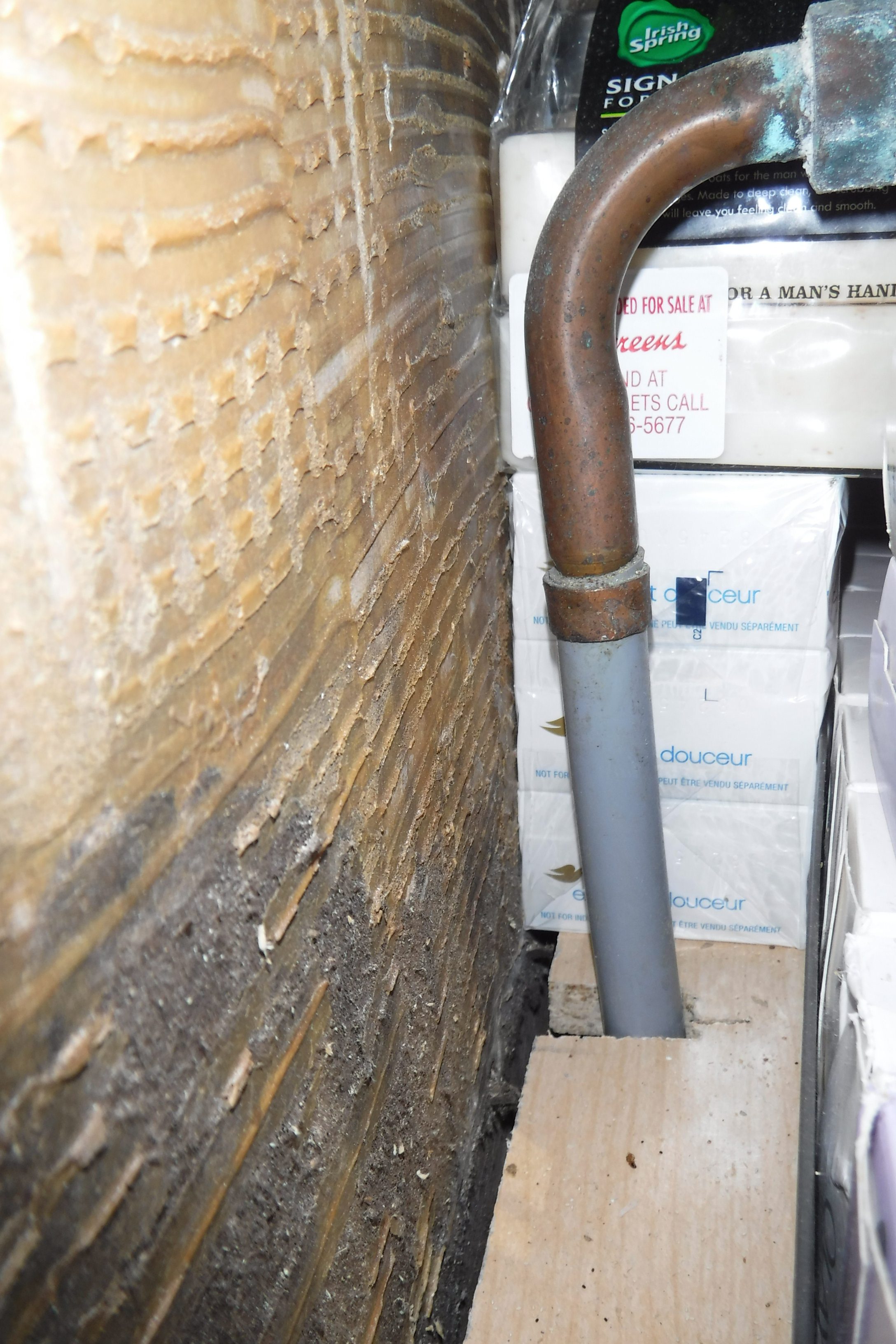
Polybutylene Plumbing
Polybutylene is a type of plastic resin water supply piping that was commonly used from 1978 to about 1995 in residential and manufactured homes. These plumbing systems were thought to be a revolutionary product that was inexpensive to manufacture and easy to install as a substitute to copper piping. Polybutylene piping is typically gray or black and stamped with “PB2110” when used inside homes for water distribution but was also produced in blue for exterior service lines and is typically ½” to 1” in diameter. Sections of piping are connected using plastic or copper fittings with copper compression bands to secure the fittings to the piping. This type of plumbing system has become known for being susceptible to failure that may result in significant water damage to a home. It is believed that oxidizers such as chlorine that are added to public water supplies, and possibly other factors, react with the polybutylene piping and acetal fittings causing internal deterioration, flaking and brittleness. This results in micro-fractures and a significantly reduced structural integrity which ultimately leads to failure and subsequent water damage. In Florida, the presence of this type of plumbing may limit the available options for homeowner’s insurance until it has been replaced by a licensed plumbing contractor. If you are uncertain or concerned about the condition of your home’s plumbing system, contact us today to schedule your home inspection.
Commercial Property Inspections
Cornerstone Home Inspection Group, LLC also offers commercial property inspections for all types of commercial properties; including Offices, Retail, Industrial, Multi-Family and Special Purpose. We understand that the needs of a commercial property investor and the use of commercial properties can be highly varied and so we are able to customize your commercial property inspection to provide the information you require to make a solid investment decision. Contact us for a property consultation and quote today.
Contact Info
Licensing Info
Florida Licensed Home Inspector #HI9508
InterNACHI ID#16013009
Florida Licensed Mold Remediator #MRSR3271
Services
- Home Inspections
- New Construction
- Wind Mitigation
- 4 Point Insurance
- Thermal Imaging
- Roof Certification
- Water Testing

Recent Comments